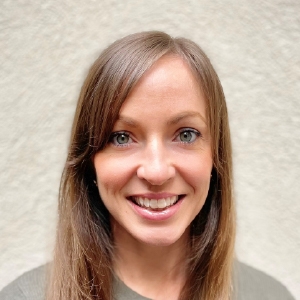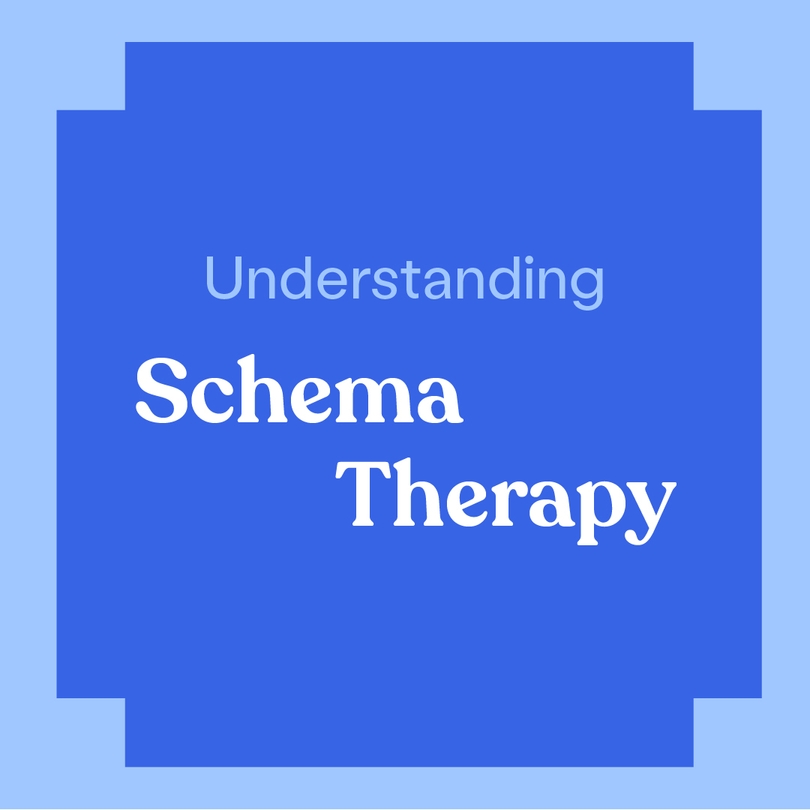Understanding Schema Therapy
Learn how schema therapy can help you to understand and let go of unhelpful patterns of behaviour formed by early experiences.

Dr Sophie Johnstone
August 30, 2023
8 min read
#depression-and-anxiety

In this article I am going to talk about what a schema is and illustrate ways that unhelpful schemas can impact your daily life. You will learn how schema therapy can help you to identify schemas and overcome the impact they can have on your life.
An evolving approach
In the past decade schema therapy has become an increasingly popular therapeutic approach for the treatment of various psychological conditions. Developed in the 1980s and 1990s, it was originally formulated as a treatment for more specific conditions, such as personality disorders [1].
However, more recently, psychologists are recognising that schema therapy can be used to treat a wide range of psychological issues such as depression, anxiety, substance abuse, OCD, relational issues, eating disorders, and trauma [2].
Schema therapy utilises a relational model that focuses on aspects of one’s personality. So, it can really be used to treat anyone who is struggling with chronic or repeated behaviours that are having a negative or unhealthy impact on their life.
So, what is a Schema?
To understand if schema therapy might be a helpful treatment for you, it is important to get a better understanding of what a schema is, and what schema therapy involves.
A schema is a broad, pervasive, and entrenched pattern of behaviour [3].
Schemas operate in the background or the unconscious and contribute to the assumptions and beliefs that we form about ourselves.
Put simply, they help us to make sense of our world. A schema can be unhelpful (maladaptive) or helpful (adaptive). When a schema is activated, often there can be an associated thought, emotion, bodily sensation, and possible image or memory, that is also triggered.
Behaviours and beliefs formed in your early years
When using schema therapy, psychologists are most interested in learning about a person’s early maladaptive schemas that have formed specifically during childhood and adolescence in response to unmet emotional needs.
Psychologists come from the understanding that every child has the universal, core emotional needs to experience [3]:
- Secure attachments to others in the form of healthy relationships that provide a sense of safety, stability, nurturing, and acceptance.
- A feeling of autonomy, competence, and sense of identity.
- The freedom to express valid needs and emotions.
- The need for spontaneity and play.
- The ability to understand realistic limits and exercise self-control.
So, when one or more of these core needs have been neglected, ignored, abused, or simply not adequately met, we may develop a schema in response to this.
There are currently 18 key Early Maladaptive Schemas (EMS). Each of these can be linked to one of the core emotional needs.
What is Schema Therapy?
Schema therapy is an extension of Cognitive Behaviour Therapy (CBT) and has a focus on understanding how early unhelpful (maladaptive) schemas formed throughout childhood and adolescence can interfere with our current thoughts, feelings, and actions. In other words, schema therapists assess a client’s recurrent, dysfunctional patterns of behaviour, and the origins of these behaviours.
The goal is to assist the client to become more self-aware, develop self-understanding, and learn more adaptive, healthier means of managing their emotions and actions.
How does Schema Therapy work
Part of working with a schema therapist is learning about which schemas you may have, and how these schemas affect the way in which you think, feel and behave. There can also be a focus on understanding your schema ‘modes’. Modes, which can also be thought of as parts or sides to oneself, are more transient than a schema, they are the momentary emotional states (or moods) and coping responses (behaviours) you experience when your schemas are activated.
Your coping modes are often activated in response to a situation that you may be overly sensitive to, and you may find yourself reacting in a way that causes issues for you and your relationships.
For instance, you may have a coping mode that involves people pleasing. If this part of you is activated when you feel insecure or unsure, and this appears to be happening frequently for you, it may lead you to feeling burnt out and dissatisfied. This is because you neglect your needs by excessively focussing on pleasing others.
Is Schema Therapy right for me?
Schema therapy is suited to relational issues or cases where ongoing dysfunctional, repetitive behaviours are occurring.
Perhaps you continually feel stuck by a negative emotional response, which is at odds with something you rationally know about yourself. For example, an emotional response like "I feel I am unworthy of love", being at odds with something you rationally know "I know I am loved by my close friends and family". When this occurs, it is likely a maladaptive schema is at play, and schema therapy may be an appropriate therapeutic approach for you.
However, if the issues you are experiencing are sudden, situational or acute (rather than chronic), while this may be something you need help with, schema therapy might not be the right approach for these issues. Other therapeutic approaches such as CBT and ACT are more focused on present or singular issues.
If you have tried other approaches, you may have found them helpful but find yourself getting stuck and returning to unhelpful patterns of thinking or behaviour, then schema therapy may be a good next step.
It's hard to do alone
Schema therapy combines a range of techniques to help you learn about your schemas and modes and recognise and modify your patterns of behaviour. Schema therapy also involves emotion-focussed techniques such as activating a schema during a session, imagery exercises, and parts/chair work.
It is the combination of these emotion-focussed techniques, along with the strong focus on the therapeutic relationship, that makes schema therapy unique to other CBT focussed interventions.
Without the insight, and process of healing that schema therapy offers, it is unlikely you will be able to shift your schemas alone.
How can Myndful help
Our qualified psychologists can work with you to help you understand your schemas and the impact they may be having on your life.
Sophie is a registered and endorsed senior clinical psychologist and AHPRA board approved supervisor with a wide range of experience across public and private settings.